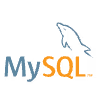🤖 AI Model Development
Contact for pricing
About this service
Summary
What's included
Trained AI model
The primary deliverable is the trained AI model itself, which is capable of making predictions or performing specific tasks based on the provided input
Model documentation
A detailed documentation that describes the architecture, functionality, and usage instructions of the AI model. It helps other developers or users understand and utilize the model effectively
Code repository
The source code of the AI model, typically stored in a version control system like Git. It includes all the necessary code files and dependencies required to reproduce or modify the model
Model evaluation report
An evaluation report that assesses the performance and quality of the AI model. It may include metrics, comparisons with baselines or benchmarks, and insights into its strengths and limitations
Deployment package and integration documentation
A package containing all necessary files, libraries, and dependencies for deploying the model, along with documentation on how to integrate and interact with it via APIs or other methods
Training data and preprocessing pipelines
If applicable, the training data used to train the AI model, along with any preprocessing pipelines or data transformations applied during the training process.
Model retraining plan
Recommendations or guidelines for retraining the model in the future, including data update frequency, potential performance improvement strategies, and version control practices.





